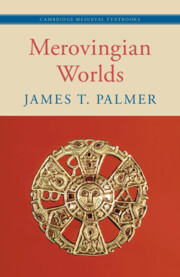Book contents
- Merovingian Worlds
- Cambridge Medieval Textbooks
- Merovingian Worlds
- Copyright page
- Contents
- Figures
- Maps
- Preface and Acknowledgements
- Note on Digitised Manuscripts
- Abbreviations
- Introduction
- 1 History and Its Historians
- 2 Identities and Status
- 3 Power in the Early Merovingian World (c. 450–613)
- 4 The Rise of the Shadow Kings (613–751)
- 5 Economies, People, and Nature
- 6 Literacy and Culture
- 7 The Frankish Churches
- 8 Religions and the Wider World
- Epilogue
- Bibliography
- Index
4 - The Rise of the Shadow Kings (613–751)
Published online by Cambridge University Press: 22 November 2024
- Merovingian Worlds
- Cambridge Medieval Textbooks
- Merovingian Worlds
- Copyright page
- Contents
- Figures
- Maps
- Preface and Acknowledgements
- Note on Digitised Manuscripts
- Abbreviations
- Introduction
- 1 History and Its Historians
- 2 Identities and Status
- 3 Power in the Early Merovingian World (c. 450–613)
- 4 The Rise of the Shadow Kings (613–751)
- 5 Economies, People, and Nature
- 6 Literacy and Culture
- 7 The Frankish Churches
- 8 Religions and the Wider World
- Epilogue
- Bibliography
- Index
Summary
This chapter examines the period in which the Merovingian kings were allegedly ‘do-nothing kings’. On the whole there was less internecine fighting, but the relative stability was poorly appreciated due to a lack of ‘great’ kings, underwhelming chronicles, and (with hindsight) the rise of the family that would replace the Merovingians as kings in 751. More successful reigns such as those of Dagobert I, Theuderic III, and Childebert III do show attention to law, administration, and aristocratic interests. The fall of the Merovingians may not have seemed inevitable or even desirable until late in the wars of conquest by the Austrasian mayor Charles Martel in the 730s.
- Type
- Chapter
- Information
- Merovingian Worlds , pp. 116 - 142Publisher: Cambridge University PressPrint publication year: 2024

